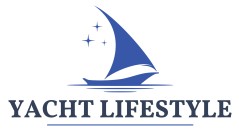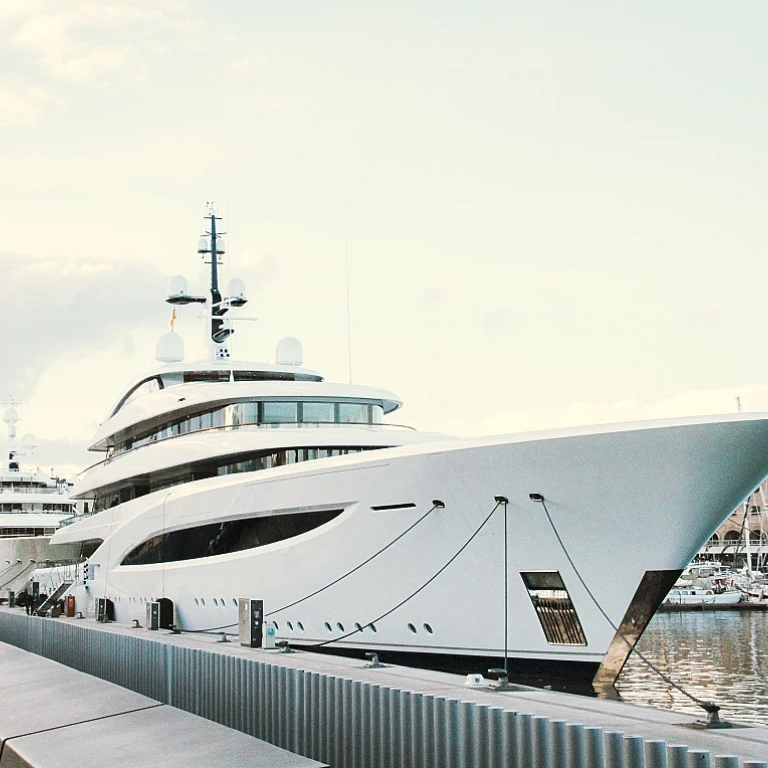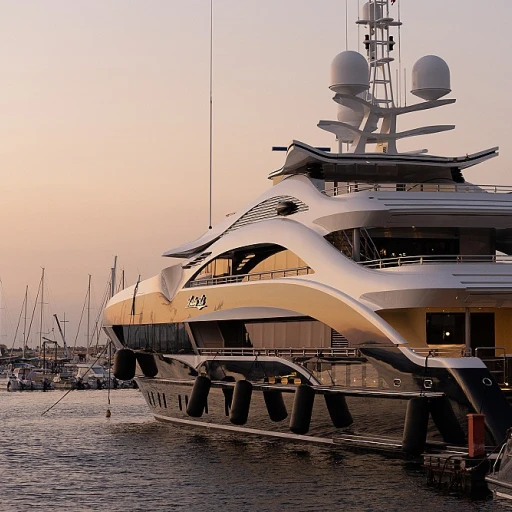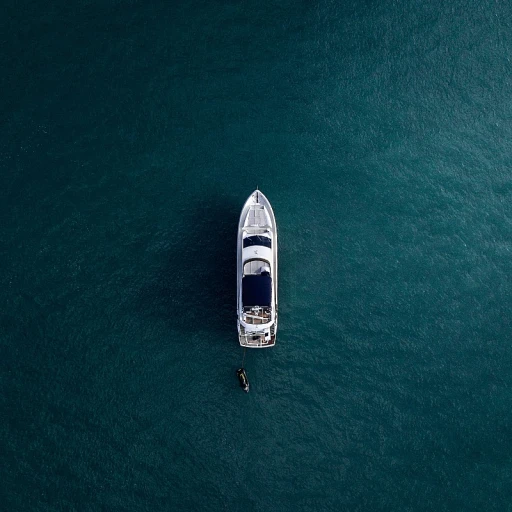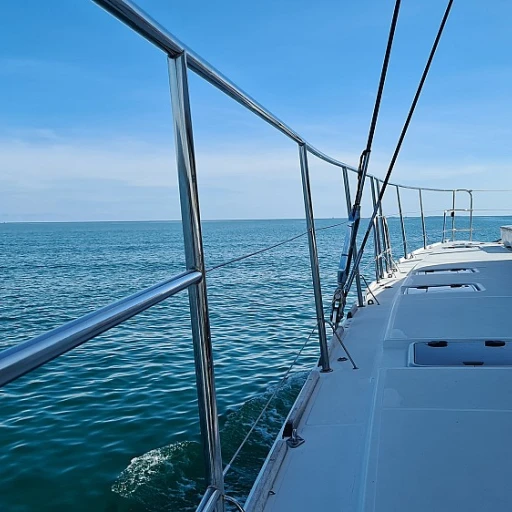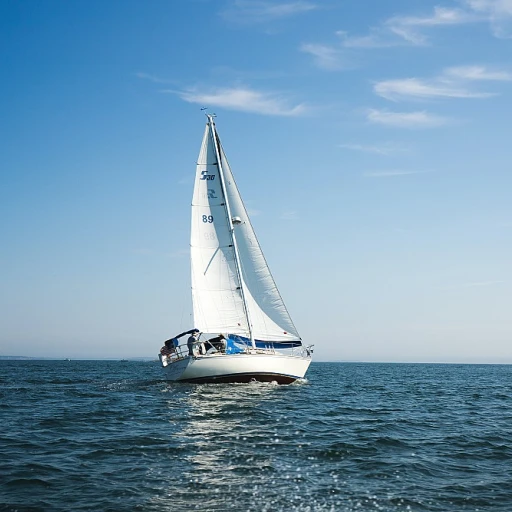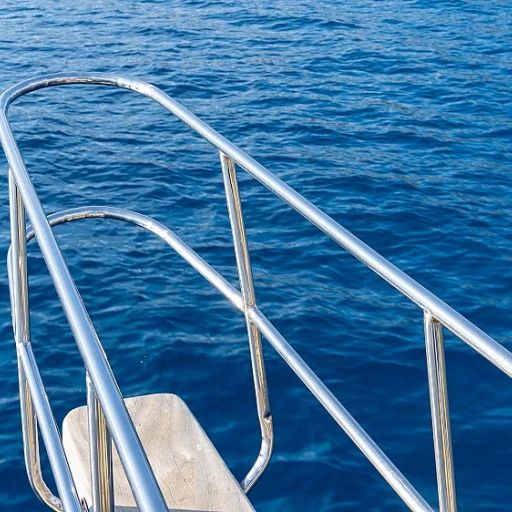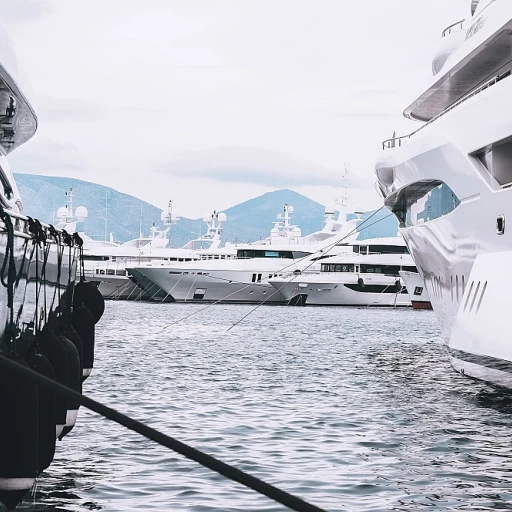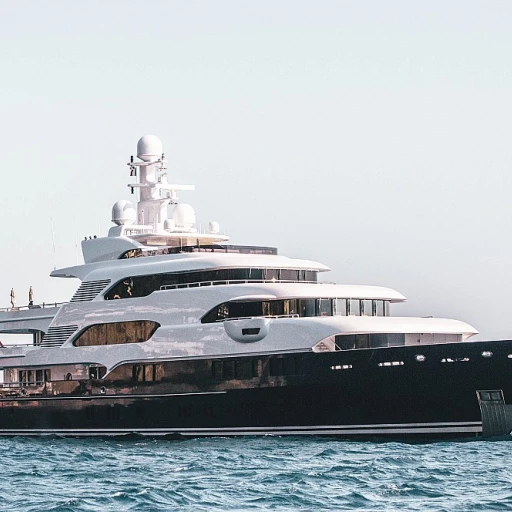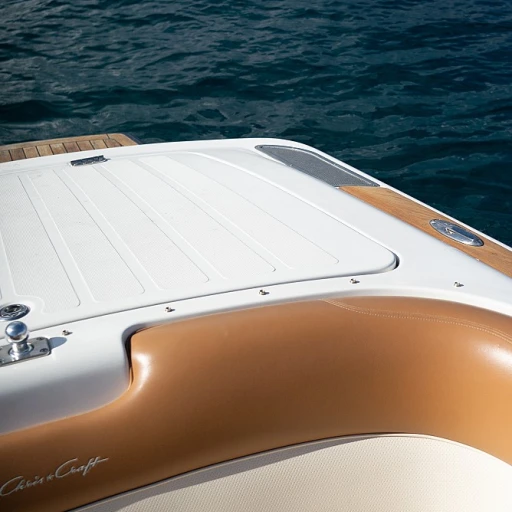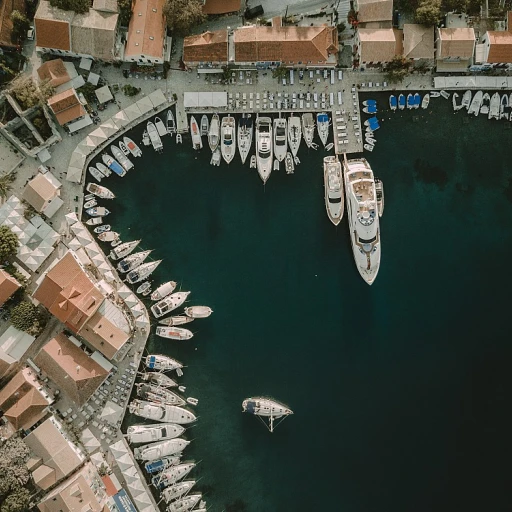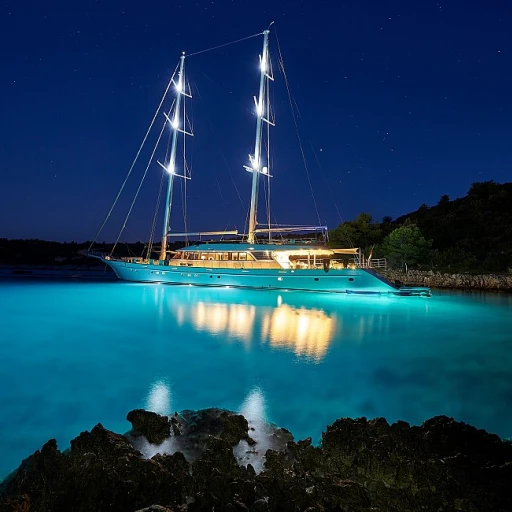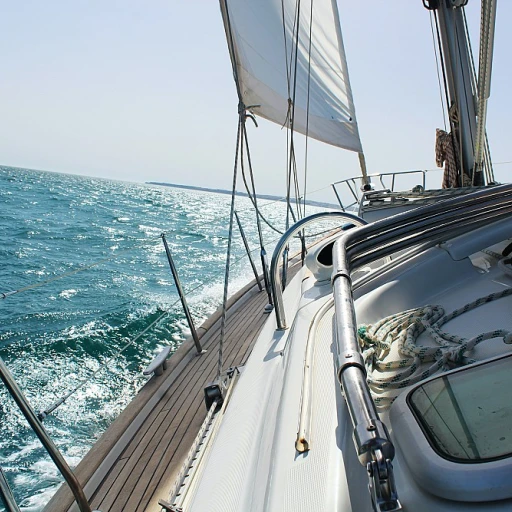
Understanding the Rolly Anchor Side Tie
The Basics
The Rolly Anchor Side Tie is a popular technique among seasoned sailors, especially when dealing with challenging rolling conditions. Utilizing the principle of balance and stabilization, this method provides a reliable way to secure your boat against unexpected swells that may hit an anchorage. Whether you are docked in the tranquil waters of San Diego or battling the rolly anchorages of the United States, understanding how to properly employ a Rolly Anchor Side Tie can significantly enhance your sailing experience.
How It Works
At the heart of the Rolly Anchor Side Tie lies the strategic use of bridle systems, flopper stoppers, and rolling hitch knots. The setup typically involves joining the anchor chain or rode to the vessel's bow and stern. This configuration allows the boat to pivot smoothly with the sway of the waves, minimizing the side-to-side mar movement attributed to a rolly anchorage. It serves well in situations where boats are moored on a mooring ball or when they anchor using only a single anchor.
Key Elements
- Anchor Rode and Chain: Essential to the setup, opting for a robust chain or rode can significantly enhance your stability.
- Bridle: Acts as a core component for securing the vessel, efficiently distributing the forces exerted by the water.
- Flopper Stopper: A tool that helps reduce rolling by absorbing movements caused by waves. Several flopper stoppers can be employed to ensure optimal performance.
Strategic Implementation
Understanding the right location and techniques for implementing a Rolly Anchor Side Tie is crucial. Experiences from mar messages and replies views suggest a combined approach, utilizing traditional anchoring methods and innovative techniques tailored to the specific needs and environmental conditions of each location. San Diego, for example, offers mild wind and waves, but a more challenging location demands a nuanced strategy with well-joined components.
Benefits of Using a Rolly Anchor Side Tie
Why Opt for a Rolly Anchor Side Tie?
The use of a rolly anchor side tie can transform your boating experience, especially when anchored in challenging conditions. This technique, increasingly popular in rolly anchorages like those in locations with prevalent swells, can provide several advantages that contribute to smoother sailing. Firstly, a rolly anchor side tie minimizes the effects of waves and swells on your vessel. When anchored bow to the wind, the continual rocking motion can make for an uncomfortable stay on the water. By securing your vessel with this method, you reduce the side-to-side motion considerably. The anchored position counteracts the influence of the wind and swell, stabilizing the boat. Moreover, utilizing a rolly anchor side tie often involves deploying a flopper stopper—a device designed to offset the rolling effect. It acts like a dampener, reducing motion and increasing comfort aboard. This becomes particularly advantageous at anchorages where the wind shifts unexpectedly. Apart from added comfort, this anchoring strategy provides increased security. By securing the anchor rode and chain in such a way that it creates an effective swell bridle, the risk of anchor drag is minimized. A firm position at the chosen mooring spot is crucial for both safety and peace of mind, especially in busy or shifting conditions found in popular marinas like San Diego. Finally, this technique contributes to the longevity of your boating equipment. By reducing stress on the boat’s systems and the anchor components, maintenance needs are decreased over time. In the long run, this leads to savings on repairs and replacements. Considering both the pragmatic and enjoyable aspects, the rolly anchor side tie undeniably enhances any voyage. For further insights on how you can maximize your yacht's performance, explore how diesel engine outboards might impact future endeavors.Challenges and Solutions
Overcoming Common Challenges
Navigating through water can be an adventure, but it comes with its unique set of challenges, especially when you're using a rolly anchor side tie. One of the primary difficulties in this scenario is managing the unpredictable nature of the swell and waves. These can cause your vessel to sway excessively, making it uncomfortable for passengers and potentially hazardous to your boat’s mooring lines and anchor rode. A rolly anchorage, often influenced by wind and water movement, requires the strategic placement of your anchor and a keen understanding of anchor chain dynamics. The combination of a well-positioned rolling hitch and a rolly anchorage can greatly reduce motion. Ensuring a stable bow and stern position is crucial, and incorporating flopper stoppers can serve to mitigate excessive rolling, providing additional stability. Another challenge involves the anchor chain and connections. You need to ensure that the chain is strong enough to withstand the forces of rolling waves and does not mar your boat. A swell bridle setup can distribute the load more evenly, enhancing the anchor's grip in varying conditions. Click expand on industry forums to see practical advice and real-world examples, where mar messages and united states forums provide insights on robust chain and bridle configurations. Location plays a pivotal role, too. Sites like san diego are known for their dynamic water conditions. Identifying messages location with minimal swell and rolling actions can significantly enhance your anchoring experience. In some cases, joining a local member group could offer you access to sailor communities that share useful information and experiences regarding the best anchorage spots and techniques. Finally, communication is key. Whether it’s jul messages or rolly anchorages, staying updated with the latest replies views from fellow sailors can provide you with firsthand experience and innovative solutions. Remember, a well-informed approach is often your best ally when confronting these nautical challenges.Technical Considerations
Key Technical Aspects for a Successful Rolly Anchor Side Tie
When it comes to mastering the Rolly Anchor Side Tie, understanding the technical considerations is crucial. This technique involves a combination of elements that ensure your vessel remains stable even in challenging conditions. Here are some key points to consider:
- Anchor and Chain Selection: Choosing the right anchor and chain is vital. The anchor should be suitable for the seabed of your chosen location, while the chain must be robust enough to withstand the forces exerted by the wind and waves.
- Bow and Stern Configuration: Properly configuring the bow and stern is essential. The bow should be positioned to face the prevailing wind, while the stern should be secured to a mooring ball or another stable point to prevent excessive rolling.
- Bridle and Swell Bridle: A well-designed bridle can distribute the load evenly across the anchor rode, reducing stress on any single point. A swell bridle can further stabilize the vessel in rolly anchorages.
- Flopper Stoppers: These devices can be invaluable in reducing the roll of the vessel. By dampening the motion caused by waves, flopper stoppers enhance comfort on board.
- Rolling Hitch and Anchor Rode: The rolling hitch is a knot that can be used to join lines securely. It's particularly useful when adjustments to the anchor rode are needed to accommodate changes in water depth or wind direction.
Understanding these technical aspects will help you navigate the challenges of rolly anchorages effectively. Whether you're in San Diego or exploring other parts of the United States, these considerations will ensure a smoother sailing experience.
Real-World Applications
Practical Utilization in Sailing.
Understanding and employing the Rolly Anchor Side Tie effectively can be a game-changer for your sailing experience. As you navigate varied marine environments, from tranquil waters to challenging rolly anchorages, knowing how this technique can be applied in different scenarios is invaluable. Sailors often face conditions where winds and waves wreak havoc on stability. Utilizing a Rolly Anchor Side Tie in tandem with a flopper stopper can significantly reduce the roll experienced by your vessel. When the boat is anchored using both the anchor rode and a swell bridle, the vessel remains steady even in a rolly anchorage. When you're trying to secure a good anchorage location, avoid the common pitfall of relying solely on an anchor chain. Integrating a rolling hitch or a joined bridle can offer additional support and minimize unwanted movement. This is particularly useful when anchored at a mooring ball or in areas with constant swell and wind. In locations like San Diego, where wind patterns can be unpredictable, mastering this technique ensures that the bow of your vessel isn’t subjected to constant motion, offering peace of mind. Additionally, incorporating elements like a flopper stopper or flopper stoppers can further negate disturbances from waves and water. Applying these techniques requires understanding the specific factors at play in each anchorage, such as the prevalent swell and wind directions. This knowledge allows you to optimize the use of your equipment, ensuring that the vessel remains stable and your maritime endeavors are safe and enjoyable.Expert Tips for Optimal Use
Proven Techniques for Rolly Anchor Side Tie Mastery
When deftly employed, the rolly anchor side tie can significantly enhance your sailing experience, particularly at more turbulent anchorages. To maximize its effectiveness, consider these expert tips that cater to various boating environments and conditions.
- Preparation is Key: Before deploying, analyze the location and expected conditions, including wind and swell. Ensure your vessel is equipped with the appropriate swell bridle and flopper stopper if needed.
- Anchor Deployment: Make sure your anchor and chain are well secured. A strategically placed anchor rode and properly adjusted bridle will facilitate smoother motion, mitigating the effects of waves and water.
- Joining Members for Stability: Consider the joined mar technique to sync your boat with the prevailing swell, which can help reduce uncomfortable movement.
- Adjusting for the Environment: If anchored in a rolly anchorage, use a rolling hitch to secure flopper stoppers effectively, anchoring your boat to handle movement caused by the bow stern dynamics.
- Synchronized Moorage: When using a mooring ball, align your bow and stern into the mar messages of your mooring spot to avoid undue strain on your equipment.
These techniques, if followed, will ensure a more seamless sailing experience, even when dealing with the unpredictability of rolly anchorages throughout san diego or any other waters prone to swell challenges.
